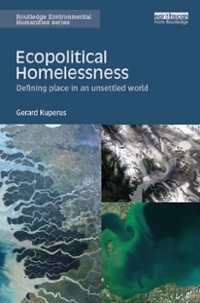4.1 Answer the following questions. 4.1.1 Give any TWO examples of world heritage sites in South Africa. (2 x 1) (2) 4.1.2 Why is there a high degree of interdependence between firms in an oligopoly market? (1 x 2) (2) 4.2 Study the information below and answer the questions that follow. MONOPOLISTIC COMPETITION Fast-food shops Hairdressers Law firms Monopolistic competitors use various non-price competition methods, like advertising, packaging and services, to attract customers. Economic profit is achieved in the short run and in the long run normal profit is realised. [Adapted from News24, September 2017] 4.2.1 Give ONE example of monopolistic competition in the information above. (1) 4.2.2 Identify ONE method in the information above that is used in non- price competition. (1) 4.2.3 Briefly describe the term monopolistic competition. (2) 4.2.4 How does a monopolistic competitor differ from a perfect competitor in terms of market information? (2) 4.2.5 Why do monopolistic competitors achieve only normal profit in the long run? (2 x2) (4)4.3 Study the graph below and answer the questions that follow. KINKED DEMAND CURVE Prices and costs 80 B 40 D1 60 65 Quantity 4.3.1 What is the equilibrium quantity level in the oligopoly above? (1) 4.3.2 Which part of the demand curve is relatively price inelastic? Use the labelling provided 4.3.3 Briefly describe a duopoly. (2) 4.3.4 How will the dominant firm influence the behaviour of small competitors in the market? (2) 4.3.5 Why will the oligopoly not decrease the price from R80 to R40? Explain by means of calculations. (2 x2) (4) 4.4 With the aid of a graph, explain why marginal cost should be equal to marginal revenue to maximise profits. (8) 4.5 Evaluate the effects of implementing maximum prices. (8 [40]QUESTION 4: MICROECONOMICS & CONTEMPORARY ECONOMIC ISSUES 40 MARKS - 20 MINUTES 4.1 Answer the following questions. 4.1.1 Name TWO characteristics of monopolistic competition. (2 x 1) (2) 4.1.2 What is the value of the production price index (PPI) as an inflation indicator? (1 x 2) (2) 4.2 Study the extract below and answer the questions that follow. TIME RIPE FOR SMART TRANSPORT Motorists will have to reconsider their transport options in the light of current petrol price hikes. According to Findalift.co.za many motorists drive to work causing millions of empty seats daily. Registering with Findalift will bring you into contact with people traveling the same route on a daily basis. Sharing the total cost of travelling 25 km daily will save you more than R6 500 every year - four people per vehicle will bring this saving up to R10 000. The Universities of Cape Town and Stellenbosch have already registered their students and employees to lower their travel costs. [Adapted from Beeld, March 2013] 4.2.1 Define the concept inflation. (2) 4.2.2 Explain the influence Findalift might have on consumer consumption expenditure. (4) 4.2.3 What impact will reduced petrol costs have on savings and investment in general? (4) 4.3 Study the graph below and answer the questions that follow. NEGATIVE EXTERNALITIES - A CAUSE OF MARKET FAILURE Price and cost (R) SMC, SMC P P Quantity 4.3.1 Define the concept market failure. (2) 4.3.2 Give ONE example of a negative externality. 4.3.3 Which curve indicates the social cost to society? (1) 4.3.4 Explain how negative externalities can lead to market failure by using the data given in the above graph. (6) 4.4 Explain inefficiency in the economy as a consequence of market failure. (4 x2) (8) 4.5 What are the effects of taxes and subsidies on the South African economy? (4 x 2) (8) [40]QUESTION 4: MICROECONOMICS AND CONTEMPORARY ECONOMIC ISSUES 40 MARKS - 30 MINUTES 4.1 Answer the following questions. 4.1.1 Name TWO features of public goods. (2 x 1) (2) 4.1.2 How does inflation affect investors positively? (1 x 2) (2) 4.2 Study the graph below and answer the questions that follow. Price Price Cost MC AC Revenue 51 e 10 10 d=MR=AR e1 7 d1=MR1=AR1 S S1 100 140 Quantity (min) 500 600 Quantity INDUSTRY INDIVIDUAL PRODUCER 4.2.1 Where does the marginal cost curve (MC) intersect the average cost curve (AC)? (1) 4.2.2 Identify the price where the individual producer will make an economic profit. (1) 4.2.3 Briefly describe the term marginal cost. (2) 4.2.4 Why is the marginal revenue curve (MR) in the perfect market the same as the demand curve? (2) 4.2.5 Explain how long-run equilibrium is achieved in the market. (2 x 2) (4)










